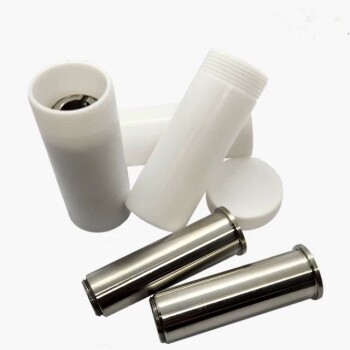When a vacuum pump fails, the consequences can range from operational inefficiencies to catastrophic damage, depending on the application and type of pump. In semiconductor manufacturing, pump failures can lead to costly downtime and damage to wafers, significantly impacting production schedules and financial outcomes. In laboratory settings, selecting the wrong vacuum pump can interfere with scientific objectives, creating an unpleasant work environment and increasing service demands. Maintenance lapses, such as failing to change the fluid or allowing fluid levels to drop below recommended thresholds, can cause severe damage, particularly in oil-sealed vane pumps. Understanding the implications of vacuum pump failures is crucial for preventing these issues and ensuring operational continuity.
Key Points Explained:

-
Impact on Semiconductor Manufacturing:
- Downtime: Vacuum pump failures in semiconductor manufacturing can halt production lines, leading to significant downtime. This downtime is costly, as it delays the production schedule and can result in missed deadlines.
- Damage to Wafers: The failure of a vacuum pump can also damage the wafers being processed. Wafers are highly sensitive and expensive components; any damage can lead to substantial financial losses and the need for rework or replacement.
-
Laboratory and Scientific Applications:
- Interference with Scientific Objectives: Choosing an inappropriate vacuum pump for laboratory use can interfere with the accuracy and reliability of scientific experiments. This can lead to compromised research outcomes and the need for repeated experiments.
- Unpleasant Lab Environment: A failing or unsuitable vacuum pump can create noise, vibrations, and other disturbances, making the lab environment less conducive to precise scientific work.
- Increased Service Demands: Frequent failures or the need for constant maintenance can increase service demands, leading to higher operational costs and reduced efficiency.
-
Maintenance-Related Failures:
- Fluid Maintenance: In oil-sealed vane pumps, failing to maintain the proper fluid levels or not changing the fluid as recommended can lead to catastrophic damage. The fluid is essential for lubrication and sealing; without it, the pump's internal components can wear out quickly or seize up.
- Catastrophic Damage: Neglecting maintenance can result in the complete failure of the pump, requiring expensive repairs or replacement. This not only incurs direct costs but also leads to operational downtime and potential damage to other connected systems.
-
Preventive Measures:
- Regular Maintenance: Implementing a regular maintenance schedule is crucial for preventing vacuum pump failures. This includes checking and changing fluids, inspecting seals and gaskets, and monitoring performance metrics.
- Proper Selection: Choosing the right vacuum pump for the specific application is essential. Factors to consider include the required vacuum level, flow rate, and compatibility with the materials being processed.
- Monitoring and Alerts: Installing monitoring systems that can alert operators to potential issues before they lead to failure can save time and money. These systems can track parameters such as fluid levels, temperature, and vibration.
-
Financial and Operational Implications:
- Cost of Downtime: The financial impact of downtime can be substantial, especially in high-volume manufacturing environments like semiconductor fabrication. Every minute of downtime can translate to significant revenue loss.
- Repair and Replacement Costs: The costs associated with repairing or replacing a failed vacuum pump can be high, particularly if the failure leads to damage in other parts of the system.
- Impact on Productivity: Beyond the immediate financial costs, pump failures can affect overall productivity and morale, as teams may need to work overtime to make up for lost production time.
In conclusion, understanding the potential consequences of vacuum pump failures and taking proactive steps to prevent them is essential for maintaining operational efficiency and minimizing costs. Regular maintenance, proper pump selection, and effective monitoring are key strategies for avoiding the negative impacts of pump failures.
Summary Table:
| Aspect | Impact |
|---|---|
| Semiconductor Manufacturing | Downtime, wafer damage, financial losses |
| Laboratory Applications | Interference with experiments, unpleasant environment, increased service |
| Maintenance Failures | Catastrophic damage, costly repairs, operational downtime |
| Preventive Measures | Regular maintenance, proper pump selection, monitoring systems |
| Financial Implications | High downtime costs, repair/replacement expenses, reduced productivity |
Don’t let vacuum pump failures disrupt your operations—contact us today for expert solutions and preventive strategies!






















